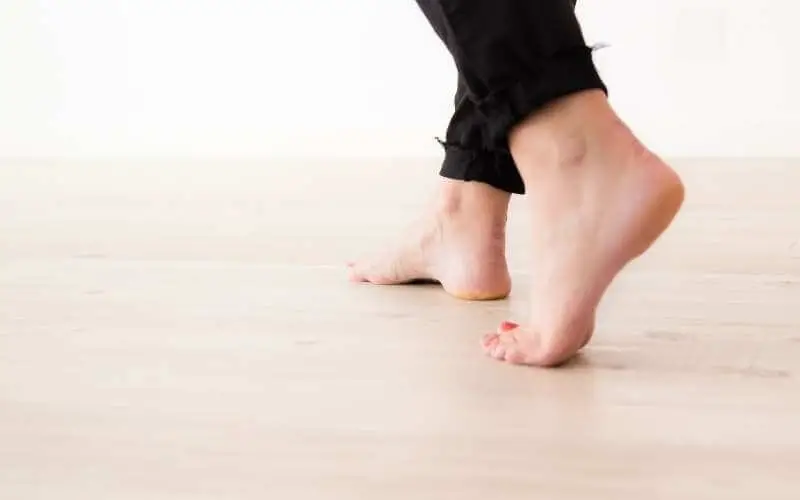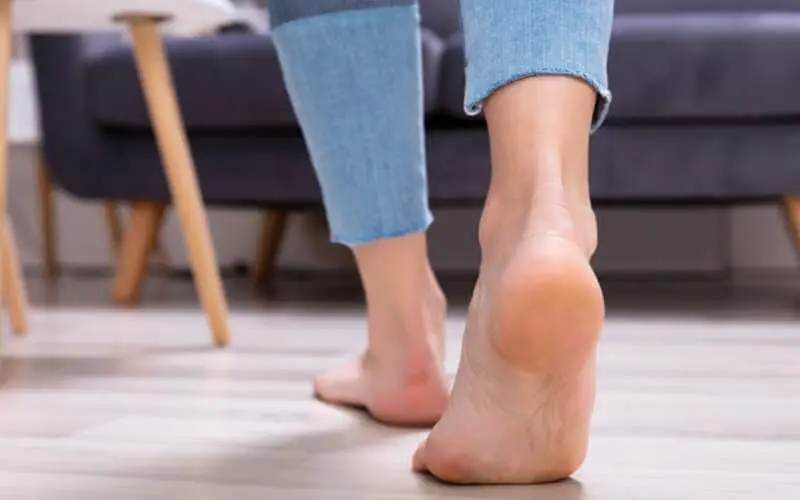Changes in house floorings usually cause creaking floors. It’s that tiny little noise you hear when you move around your house. Some noises can be loud too.
Locating the spot and installing a piece of wood between the floor joist, using adhesive, tightening with a screw, installing a soundproof underlayment are a few of the many ways on how to stop creaking floors in an apartment.
Although it is not a reason to panic, it can be pretty frustrating, especially when you want to rest and you don’t appreciate the noise; if you are reading this, here is everything you need to know about creaking floors and how you can stop it.
Related: How to Fix Squeaky Hardwood Floors With Baby Powder
Causes of Creaking Floors
Table of Contents
There are a few reasons that cause squeaky floors in our homes, they are:
- Subfloors
- Temperature and humidity
- Bad installation
- Setting and foundation movement
Subfloor Causes
Bad subfloors are one of the leading causes of creaking floors; it is often one of the following.
- Unlevelled level subfloors
- Spacing between the subfloors and joist
- The subfloor seems off-center with a joist.
- quality subfloors
Unlevelled Subfloors
Unlevelled subfloors mean the presence of gaps between the subfloor and the flooring. Holes can be found on surfaces of the subfloors and high or low areas in the subfloor seams.
Installing flooring over these gaps in the subfloors makes your flooring hang in the air, which can lead to creaking sounds when stepped on.
Spacing Between Subfloors and Joists
Many factors could cause spaces between the subfloor and joist. One way to prevent space is to glue and nail the subfloors to the joist carefully and correctly.
Many contractors only nail the subfloors down and miss the joist, leading to a loose flooring attachment by gluing and nailing the subfloors correctly; possible gaps can be eliminated.
Subfloor Seams Off-Center with a Joist
This does not happen often; sometimes, if an installation is rushed, the subfloor might be installed off-center with the joist.
This means that the flooring seams are over a gap; this can also lead to creaking sounds on the subfloors.
Quality of Subfloors
A low-quality subfloor will make a creaking sound on the floor; moisture-soaked woods glued into sheets will not hold fasteners like wood that is carefully kept dry.
However, woods with a high resin quality can make a subfloor hard, making it difficult for fasteners to penetrate; if it does penetrate, the wood is too rigid to maintain a hold. The right quality of subfloors will eliminate sounds on a floor.
Temperature and Humidity Causes
changes in temperature and humidity of wood, they shrink when they are dry, which causes a thin gap between the boards and can make a creaking sound when stepped on.
E.g., during winter, hardwood floors are prone to shrinkage and will expand during summer.
This shrinkage and expansion can lead to flooring coming loose from the subfloor; it can lead to nails pulling out and glued floors getting loose, which can cause sound on the floor.
Solid woods are more affected by temperature and humidity than engineered wood. Engineered wood is designed to resist these types of issues.
Bad Installation
Another leading cause of squeaky floors is terrible installation and poor workmanship.
Poorly installed floors can cause movement between subfloors.
Setting and Foundation Movement
Movement around foundation settings may cause stress on flooring support or subfloors, leading to dislodging between subfloors to generate creaky sounds.
Read: How difficult is it to replace floor joist?
How to Stop Creaking Floors in an Apartment
We already know the causes of creaky floors in an apartment; let’s look at ways to fix them
Locate the Spots
You must locate and mark the areas where the sound is coming from. You can get a partner to help you do this for easy work.
Install Pieces of Wood Between the Floor Joist
This supports the floor joist; this lessens movement between the subfloor and sounds when stepped on.
Use Fluid Adhesives or Shim for Smaller Gaps
Tiny gap spaces should be fixed with a shim or a liquid adhesive, and a shim is a piece of tapered wedge used to level things out; they come in wood and plastic form and are water-resistant.
Take note not to use a piece of shim as wide as the gap to create more significant problems; an adhesive fluid is best used for a long and thin gap. Alternatively, you can use wood filler or caulk to fill in smaller gaps.
Tighten With Screws
Creaking floor sounds caused by the separation of subfloors from the floor can be fixed with a screw. Make use of the correct screws and make sure it is correctly done.
For carpeted floors, this requires a little more effort. Raise carpets and drive the screw through the subfloors to tighten them.
Use Talcum Powder
A temporary fix can be the sprinkling of talcum powders on affected areas and using a dry paintbrush to help push it into the gaps.
This stops the creaky sound for the moment, but you will need to repeat the process if the sounds keep coming back.
Install Joist Hangers or Brace
Joist hangers are metals inserts that can be put in between the subfloors and joist to create a support system. They are usually strong, durable, and more reliable.
Installation of Soundproof Floor Underlayment
This adds layers to floorboards to give them more stability; this requires more work and time than the rest but usually gives the best result.
Why Does Laminate Floors Crack
Laminate floors are manufactured, multi-layered products used as floorings. They have the appearance of wood and are very durable.
A laminate floor can crack due to temperature and humidity changes in the environment. Contraction and expansion above a specific limit due to changes in temperature lead to cracking on laminate floors.
How to Fix Laminate Floor Crack
Clean Work Area
Remove dirt from the work surface either by sweeping or vacuuming, wash the floor and allow it to dry.
Identify Crack
Check the floor for cracks and mark damaged areas. Please choose the color of putty you need to buy and ensure it matches the tone of the flooring.
Some crack areas can be fixed with a particular wax crayon.
Sand the Area
Sand the area to make it smoother and get rid of accumulated dirt; this ensures the putty will blend well with the flooring and remove the excess with a sand grit.
Apply Putty
Mix putty with the hardener in the kit using a putty knife. Apply on crack areas little by little. You should remember that putty hardens fast, so you have limited time to fill in the cracks.
Remove Excess Putty
This can be done by using a damp cloth before it hardens; use a putty knife to remove excess if it is dried. Apply caution while using a knife to avoid scratching the floor surface.
Allow Drying
Give it two to three days to properly dry before you can use the area again.
Read: How to fix hardwood floor gap
Conclusion
Creaky floors are very easy to fix. The first step is to locate the source and the reason for the noise; then it becomes easy to fix using the appropriate option available.
The article explains in detail how to stop creaking floors in an apartment and the steps to take to achieve this to give you your desired result.
We hope you found it helpful; if you did, kindly share it across your entire social media pages.

